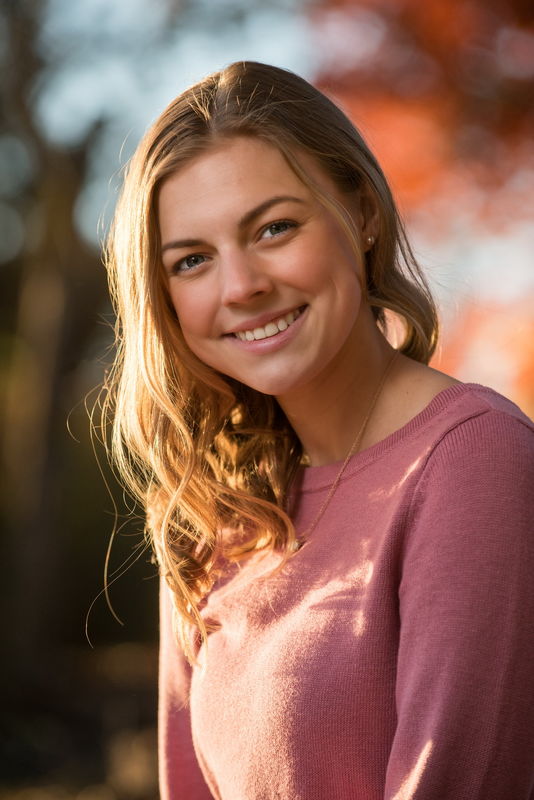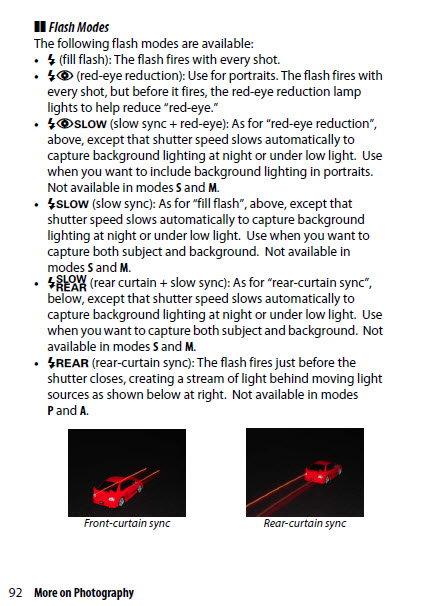High Speed Sync
Nov 20, 2017 15:17:10 #
I have a Nikon D3300, please explain "High Speed Sync", what ir is, and what purpose does it fulfill in my Photography. I am a beginner of about One year.
Nov 20, 2017 15:22:04 #
High speed sync is a flash mode that allows the use of shutter speeds above the normal maximum flash sync shutter speed (1/250 second on my camera).
Don't know the D3300 but with my flash and camera High speed sync will allow shutter speeds of up to 1/8000 s.
I believe the main purpose is to allow blending of natural light and flash.
Don't know the D3300 but with my flash and camera High speed sync will allow shutter speeds of up to 1/8000 s.
I believe the main purpose is to allow blending of natural light and flash.
Nov 20, 2017 15:25:26 #
A quote from ExposureGUide.com
"High-speed sync flash is your DSLR’s ability to use a flash at shutter speeds faster than the camera’s native sync. Most cameras have a native sync of 1/250th of a second, and anything faster than that is beyond the camera’s ability to sync the shutter with the flash. But if you happen to be in a situation that requires faster shutter speeds to effectively capture the action, or for other aesthetic reasons (like a wide aperture), then you’ll over-exposure your image. However, high-speed sync flash/camera combinations allow you to use the flash at higher shutter speeds."
Pretty well defined in that most cameras normally only syncronize their shutter up to 1/250th of a second. Faster than that and only part of the photo will be illuminated. Some cameras allow for High Speed sync so you can use the flash at a higher shutter speed.
"High-speed sync flash is your DSLR’s ability to use a flash at shutter speeds faster than the camera’s native sync. Most cameras have a native sync of 1/250th of a second, and anything faster than that is beyond the camera’s ability to sync the shutter with the flash. But if you happen to be in a situation that requires faster shutter speeds to effectively capture the action, or for other aesthetic reasons (like a wide aperture), then you’ll over-exposure your image. However, high-speed sync flash/camera combinations allow you to use the flash at higher shutter speeds."
Pretty well defined in that most cameras normally only syncronize their shutter up to 1/250th of a second. Faster than that and only part of the photo will be illuminated. Some cameras allow for High Speed sync so you can use the flash at a higher shutter speed.
Nov 20, 2017 15:31:21 #
Your D3300 will sync to 1/200 (page 108 in the manual). That is the fastest shutter speed you can use either for the built-in flash or for an attached flash. High-speed sync is a feature of more advanced cameras and external flash models. Imagine a bright sunny day where your subject has shade covering their face with the sunlight shining down on their back. You might use your flash as a "fill light" to eliminate those shadows on their faces. But, you need a fast shutter in the bright light to avoid overexposing the entire image. On your D3300, you can only go as fast as 1/200. Other models might allow you to go, to say, 1/500 or maybe as fast as 1/8000, depending on your needs and the capability of the body and flash.
Nov 20, 2017 15:33:31 #
And when using high speed sync, you typically have a substantially lower flash output available than when shooting at “normal” flash sync speeds.
Nov 20, 2017 15:37:00 #
Cameras with the focal plane shutter that is the shutter is right in front of the sensor rather than in the lens has a maximum speed that it can sync with the flash. The reason for this is that at shutter speed above the maximum sync speed the second curtain starts to close before the first curtain open fully. In that way it only expose part of the sensor at any given time. This works fine for continuous light but for flash, the flash must be fired at the moment the first curtain open fully but before the second curtain starts to close.
Nov 20, 2017 15:46:55 #
There is a post on this in the FAQ section: http://www.uglyhedgehog.com/t-74372-1.html
I use High Speed Sync (Auto FP in Nikon-speak) so I can use a wider aperture than I would be stuck with because of the limited normal sync setting of focal plane shutters.
Without it, this photo I shot last week at 1/1250th @ f4 would have had to have been shot at 1/250th @ f 9...way too much depth of field for a portrait. (haven't had time to fix the fly-aways)
I could have used a reflector, but that would have required someone to hold it (it was a bit breezy and they act like a sail in the wind)
Another option would be to use an ND filter on my lens, but I like to see what I'm shooting. I'm odd that way.
The power reduction the flash has in that mode isn't usually an issue as I use it up close at a wide aperture.
I used a Nikon SB910 in a medium softbox.
A different take on it shooting sports HERE.
I don't believe your Nikon D3300 can do HSS/Auto-FP.
I think the lowest level with that available is the D7xxx line.
....and you'll need a flash that is capable as well.
I use High Speed Sync (Auto FP in Nikon-speak) so I can use a wider aperture than I would be stuck with because of the limited normal sync setting of focal plane shutters.
Without it, this photo I shot last week at 1/1250th @ f4 would have had to have been shot at 1/250th @ f 9...way too much depth of field for a portrait. (haven't had time to fix the fly-aways)
I could have used a reflector, but that would have required someone to hold it (it was a bit breezy and they act like a sail in the wind)
Another option would be to use an ND filter on my lens, but I like to see what I'm shooting. I'm odd that way.
The power reduction the flash has in that mode isn't usually an issue as I use it up close at a wide aperture.
I used a Nikon SB910 in a medium softbox.
A different take on it shooting sports HERE.
I don't believe your Nikon D3300 can do HSS/Auto-FP.
I think the lowest level with that available is the D7xxx line.
....and you'll need a flash that is capable as well.
1/1250th @ f4 Nikon 70-200 2.8

Nov 20, 2017 16:27:38 #
Nov 20, 2017 16:32:20 #
TriX wrote:
And when using high speed sync, you typically have a substantially lower flash output available than when shooting at “normal” flash sync speeds.
I believe the normal loss typically is 3 times. It can be tricky when using just one speedlight that is only 60 watts of power. I'm now using a neutral density filter to aid this deficiency and to decrease my DOF use when the light is strong.
Nov 20, 2017 21:17:00 #
Haydon wrote:
I believe the normal loss typically is 3 times. It can be tricky when using just one speedlight that is only 60 watts of power. I'm now using a neutral density filter to aid this deficiency and to decrease my DOF use when the light is strong.
Just got me to thinking...how low can ISO go? Super low light sensitivity might enable large aperture slow shutter speed regular flash synch?
Nov 20, 2017 21:21:56 #
tinplater wrote:
Just got me to thinking...how low can ISO go? Super low light sensitivity might enable large aperture slow shutter speed regular flash synch?
I've read ISO 64 on the Nikon D850.
But I don't have as good a result with HSS if I drop my ISO down to the lowest setting.
Nov 20, 2017 21:45:01 #
GoofyNewfie wrote:
I've read ISO 64 on the Nikon D850.
But I don't have as good a result with HSS if I drop my ISO down to the lowest setting.
But I don't have as good a result with HSS if I drop my ISO down to the lowest setting.
I believe with Nikon's D8** series base is ISO 64. I don't believe Nikon is affected at that ISO because it is native. Correct me if I'm wrong GoofyNewfie. Canon's native I believe is 100 but I don't fully understand the premise they use which points to a real/push/pull environment. Canon can artificially extend to ISO 50 but it comes at a cost of lower DR. I believe Nikon extends to 32 but like Canon that too is artificial.
It's very common for photographers to use 3 and 6 stop ND filters to battle the limitations of shutter speeds out in the field with monolights and to benefit wide open apertures when HSS is absent. I was forced in that situation just this summer on a fairly bright day using a single Buff Einstein light in combination with a 70-200 2.8 with a limiting of 1/200 second.
Nov 20, 2017 23:05:50 #
Haydon wrote:
I believe with Nikon's D8** series base is ISO 64.... (show quote)
I’m not sure about the lowest ISO on my Nikons. Shooting events, I usually hang out in the 800- 3200 range.
I’ve never worked with “hypersync”, another way to work with higher shutter settings. Have you?
Nov 20, 2017 23:27:01 #
GoofyNewfie wrote:
I’m not sure about the lowest ISO on my Nikons. Shooting events, I usually hang out in the 800- 3200 range.
I’ve never worked with “hypersync”, another way to work with higher shutter settings. Have you?
I’ve never worked with “hypersync”, another way to work with higher shutter settings. Have you?
No I haven 't. I'm using Einstein triggers and do not have Pocket Wizards that allow hypersync. I have read several articles regarding hypersync and most of it has been received with a luke warm response. From what I understand, hypersync only effectively works when they are triggered at full power and even then has a limitation in SS. This is why I finally decided on buying a ND filter system instead. At this point I only have a 3 Stop but I understand under brighter mid-day conditions or hotter light, a 6 stop in invaluable. Joel Grimes has been a huge advocate for ND use for outdoor lifestyle shooting.
Some of the newer light systems including higher end monolights have HSS capability but I haven't investigated it. I'm tied in with Buff stuff for now.
Nov 21, 2017 06:10:39 #
rdubreuil
Loc: Dummer, NH USA
Silverman wrote:
I have a Nikon D3300, please explain "High Speed Sync", what ir is, and what purpose does it fulfill in my Photography. I am a beginner of about One year.
The D3300 does not support high speed sync. Here are the sync modes it does support.
D3300 User's Manual

If you want to reply, then register here. Registration is free and your account is created instantly, so you can post right away.









